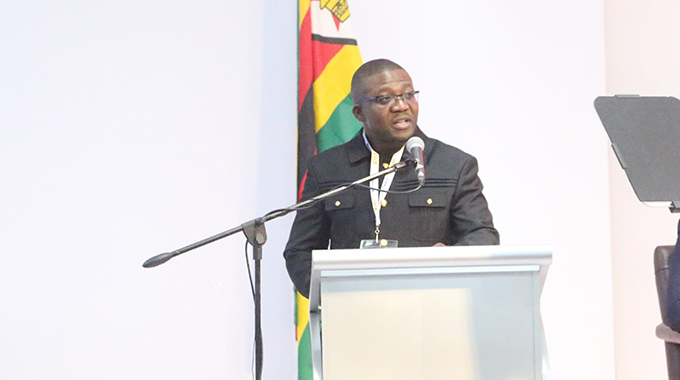Philosophical guidelines to effective strategy management, implementation

Talking Strategy With Dr Julius Tapera
VARIOUS management theories guide the effective implementation of organizational strategies. In this article, we look at four theories; the Dynamic Capabilities Theory, the Resource-Based View, the Stakeholder Theory, and the Open Systems Theory, as well as their relevance to effective strategy implementation.
Dynamic Capabilities Theory
Dynamic capabilities refer to an organization’s capacity to incisively create, extend, or modify its resources and reconfigure internal and external competencies to create competitive advantage.
A firm’s proficiency in designing its business model is based on its dynamic capabilities, which in turn influences the efficiency and effectiveness with which it can implement certain strategies.
Dynamic capabilities, therefore, have an influence on firm performance. The business environment continues to be volatile, uncertain, complex, and ambiguous and what distinguishes one firm’s performance from the other within an industry is the variability in the acquisition and deployment of dynamic capabilities in responding to changes in the environment.
The firms that are swift in learning and appropriately timing the deployment of dynamic capabilities ahead of others create competitive advantage and position themselves for superior organisational performance.
The relevance of the dynamic capabilities theory to strategy can be summed up in five major themes. Firstly, dynamic capabilities are key in shaping organisational processes, which include the whole strategic planning process. Secondly, since organisations are learning organisms, the dynamic capabilities are continuously learned patterns of firm activities. Thirdly, owing to the need for organisations to continuously respond to vicissitudes in the business environment, dynamic capabilities equip strategic leaders with the requisite knowledge, skills and competencies to adequately respond to these changes.
Fourthly, dynamic capabilities determine an organisation’s ability to mobilise and deploy the requisite resources to position itself for sustainable competitive advantage and superior performance. Fifthly, dynamic capabilities facilitate development of new organisational designs that can identify, create and seize opportunities.
Dynamic environments call for open organisations that swiftly transform individual capabilities into actionable collective ideas that can be implemented to exploit opportunities to drive firm performance. Through dynamic capabilities, firms can continuously adjust their resource bases in response to the variability of the business environment.
This responsiveness is critical in maintaining a firm’s competitive market position, which would otherwise be lost to competitors in the absence of adequate acquisition and deployment of these dynamic capabilities.
Dynamic capabilities, thus, ultimately inform an organisation’s choice of strategy in pursuit of its goals, and have an impact on how an organisation performs.
Resource-Based View
The Resource-based view (RBV) conceptualizes a firm as a set of unique tangible and intangible resources, which are key in creating a sustainable competitive edge and superior organisational performance.
Organisations own heterogeneous resources, which they can utilise to formulate, select and execute strategies. Due to the heterogeneity of these resources, firm strategies are bound to be different.
The diversity of firm strategies subsequently contributes towards and account for differences in firm performance.
These firm-specific, unique resources include but are not limited to financial, technology, start-of the-art plant and equipment, human capital, strategic location and control over raw material sources.
RBV also focuses on the organisation’s internal structures and its capability to respond to market challenges and opportunities. The RBV advocates for rational utilisation of the firm’s resources for improved performance.
The resources that firms can leverage on to create and maintain competitive advantage have been classified as valuable, rare, inimitable and non-substitutable (VRIN) resources.
The RBV looks at how these resources can be integrated into organizational operations to create unique capabilities. An asset in isolation can hardly confer competitive advantages to a firm. Instead, complementary capabilities are needed to extract the benefits that can be potentially derived from an asset.
A recent addition to the list of organisational assets is intellectual capital (IC), referring to all forms of valuable relationships that are created through the acquisition and application of knowledge.
Several dimensions of IC have been identified and they include human, structural, customer, organizational, process, innovation capital, intellectual property and intangible assets.
A nexus, thus, exists between managers’ strategic planning capabilities and how they effectively and efficiently acquire and deploy the resources that are at their disposal for improving organisational performance.
Stakeholder Theory
The Stakeholder Theory is an alternative way of understanding how organisations and various stakeholders create value and trade with each other. Organisations have various stakeholder groups with which they exchange value and these stakeholders have certain expectations on the organisations.
Some examples include shareholders, who expect a maximum return on their investment; customers, who expect value for their money from the goods and services provided; employees who expect a conducive working environment and equitable rewards, suppliers/creditors who expect timely payment for their dues and continued patronage, among others.
Organizational success, therefore, depends on the effectiveness and efficiency with which the organisation manages its relationships with its stakeholders and the extent to which the organisation formulates and implements strategies that meet stakeholder expectations.
There is a need for the firm to strategically balance meeting these stakeholder expectations and maintaining a sustainable competitive edge.
Thus, organisational leaders responsible for leading the strategic planning process need to acquire the requisite skills and competencies to consistently maintain this balance; ensuring that the organisation is meeting its set objectives while also meeting stakeholder expectations. A nexus, therefore, exists between an organisation-wide engagement and empowerment of internal stakeholders with the requisite capabilities for identifying opportunities (sensing), resource mobilisation (seizing), and value-creation interventions(transforming), which lead to superior organisational performance.
Stakeholder theory asserts that organisational relationships are based on the principles of knowledge and information sharing, mutual trust, inclusivity in decision-making and alignment of stakeholders’ interests in the strategic planning process, all of which require managers to have strategic planning capabilities and are envisaged to create greater value for the organization.
Open Systems Theory
The Open Systems Theory postulates that institutions are open systems, which continuously interact with their environments. It is a contemporary approach to change management, whose objective is to create adaptive organisations that are agile to respond swiftly to the dynamic operating environments.
The openness to interact with the environment positions the business organisation to efficiently and effectively respond to challenges posed by the volatility and uncertainty of the environment.
The theory also asserts that organisations, through continuous interaction with the environment, develop resilience and innovative capacities to seize opportunities that are created by environmental dynamism, and also create other new opportunities in the process.
The needs that organisations are established to satisfy evolve over time and according to the Open Systems Theory, those organisations that do not transform to meet the new needs die and only those that continuously read the trends and position themselves to respond to the changing consumer needs will have a sustainable competitive advantage.
The theory perceives the firm as a set of sub-systems that facilitate the acquisition of inputs from the external environment, transforms them through various interventions, and releases them back as outputs into the external environment.
The theory focuses on business environment developments external to the organization that significantly impact internal changes in the organisation. Based on the Open Systems Theory (OST), organisations need to regularly monitor the macro environment to identify factors that have a bearing on their strategic choices, sustaining competitive advantage and achievement of long-term organisational objectives. Organisational managers, therefore, need to develop the requisite strategic planning capabilities so that they efficiently and effectively manage how their organisations interact with the external environments, astutely manage internal environmental dynamics and ensure good organisational performance in the process.
Dr Julius Tapera holds a PhD in Strategic Management and is currently the Assistant to the Vice-Chancellor at Lupane State University. He is a Strategic Management Consultant, Motivational Speaker & Author. He is contactable on Mobile: +263773586037; Email: [email protected] or [email protected]












Comments